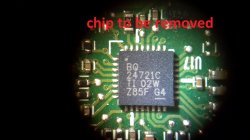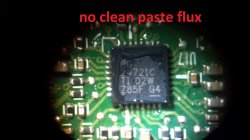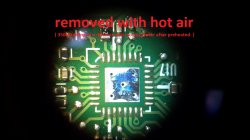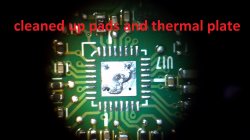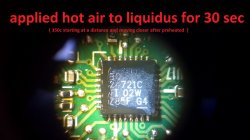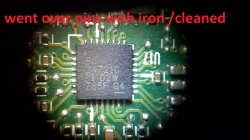I have a 2010 MBP13" that will not recognize the SATA hardware. I can boot off USB or SD Card. Apple Update says it needs the latest EFI firmware update. I wanted to flash the EFI and the SMC but when I run EFI flash utility it "says" it installs it and reboots but it never does do the proper update procedure on restarting (flashing sleep LED, Beep, progress bar). I am guessing it is because I am booting from USB. I was hoping to find a way to manually flash the EFI and SMC to see if this is just a firmware corruption issue. Can't see anything obvious wrong with the hardware.
The install procedure for people who cant use a hard disk and need to update their efi or smc firmware:
- Format a usb pen drive (GPT format with 1 fat32 partition)
- Extract from Apple smc & firmware update site your .smc and (.fd or .scap) firmware files. Also copy the EFIUpdaterApp.efi and SmcFlasher.efi to the usb pen.
- Using Terminal in macos x type:
login root
ls /Volumes (check your pen_name is listed there)
cd /Volumes/pen_name
bless -mount ./ -firmware EFIUpdaterApp.efi -payload MB_yourfile.fd -options "-x efi-apple-payload0-data" (the "./" means u'll use your usb pen to flash - dont need a real hard disk

Reboot. if the flash fail u'll need to use Refind shell todo it. Log to refind shell and type:
map (check fs0 fs1 4 "usb" on the string)
fs1:
ls (should list your usbpen and files)
To flash the firmware u can type:
EFIUpdaterApp -x efi-apple-payload0-data
If you get a fast reboot it means the flash failed. To downgrade the firmware u'll need a hacked EFIUpdaterApp.
Otherwise u need to make your smc tobe in a speciall way so u can flash:
- Power off and Remove batery.
- old the power buton and plug the power cord. when you see the power led green release and old the power button.
- when the front led start to flash remove the power cord.
- redo until u figure out how it works

boot to the usb_pen redo the shell commands. it should work
To flash the smc type SmcFlasher -LoadApp yourfile.smc
you can try to use the attached file to check 4 firmware status. type spiutil2 without any option. if you see a warning msg saying "flash restrictions apply" redo the power trick until the warn goes away.


